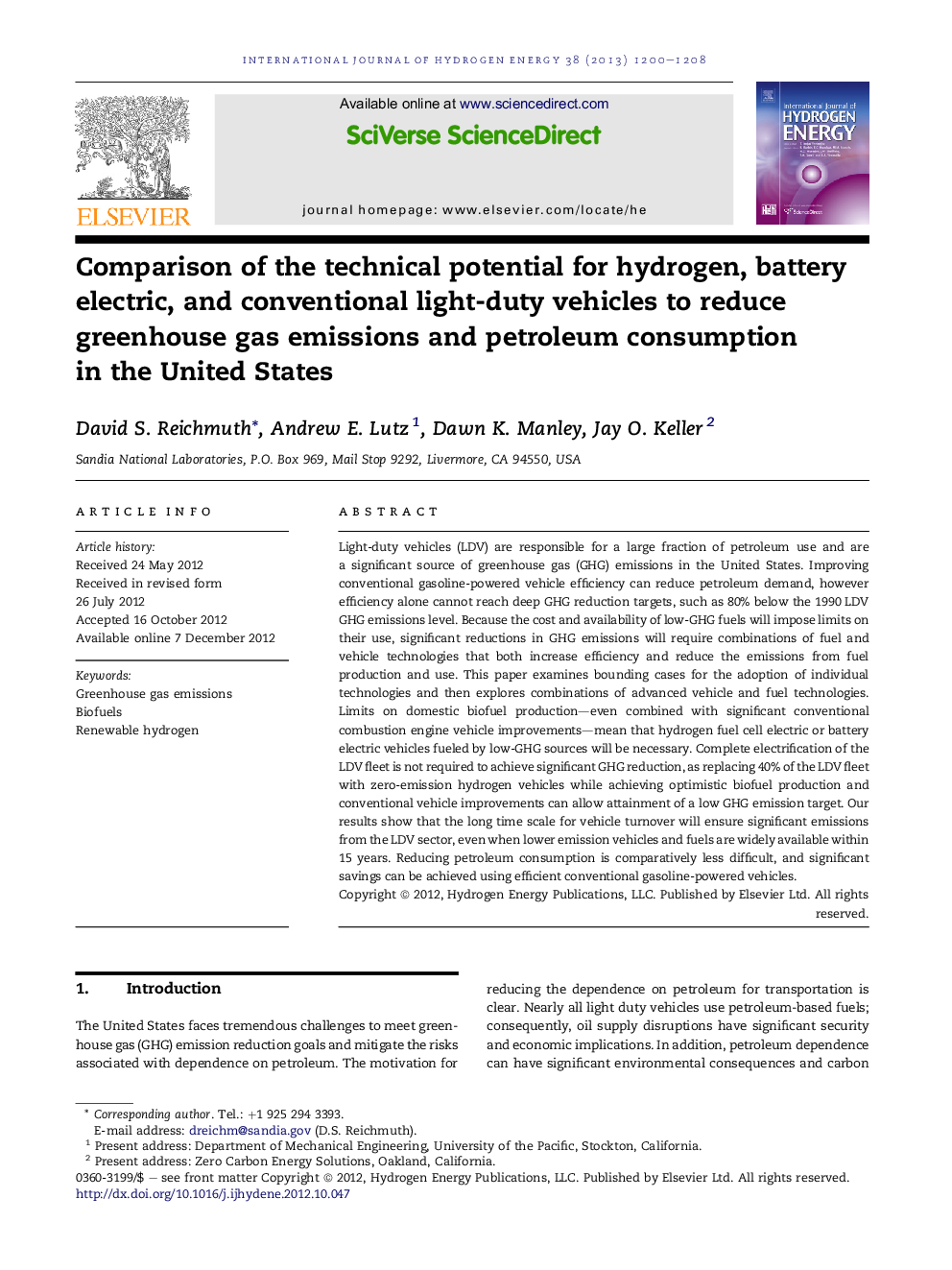| Article ID | Journal | Published Year | Pages | File Type |
|---|---|---|---|---|
| 1282086 | International Journal of Hydrogen Energy | 2013 | 9 Pages |
Light-duty vehicles (LDV) are responsible for a large fraction of petroleum use and are a significant source of greenhouse gas (GHG) emissions in the United States. Improving conventional gasoline-powered vehicle efficiency can reduce petroleum demand, however efficiency alone cannot reach deep GHG reduction targets, such as 80% below the 1990 LDV GHG emissions level. Because the cost and availability of low-GHG fuels will impose limits on their use, significant reductions in GHG emissions will require combinations of fuel and vehicle technologies that both increase efficiency and reduce the emissions from fuel production and use. This paper examines bounding cases for the adoption of individual technologies and then explores combinations of advanced vehicle and fuel technologies. Limits on domestic biofuel production—even combined with significant conventional combustion engine vehicle improvements—mean that hydrogen fuel cell electric or battery electric vehicles fueled by low-GHG sources will be necessary. Complete electrification of the LDV fleet is not required to achieve significant GHG reduction, as replacing 40% of the LDV fleet with zero-emission hydrogen vehicles while achieving optimistic biofuel production and conventional vehicle improvements can allow attainment of a low GHG emission target. Our results show that the long time scale for vehicle turnover will ensure significant emissions from the LDV sector, even when lower emission vehicles and fuels are widely available within 15 years. Reducing petroleum consumption is comparatively less difficult, and significant savings can be achieved using efficient conventional gasoline-powered vehicles.
► We assess the carbon emissions from low-carbon fuels for transportation. ► Petroleum-fueled vehicle improvements alone cannot reach aggressive emission goals. ► Carbon emission goals are reached by combinations of renewable biofuel and H2.
